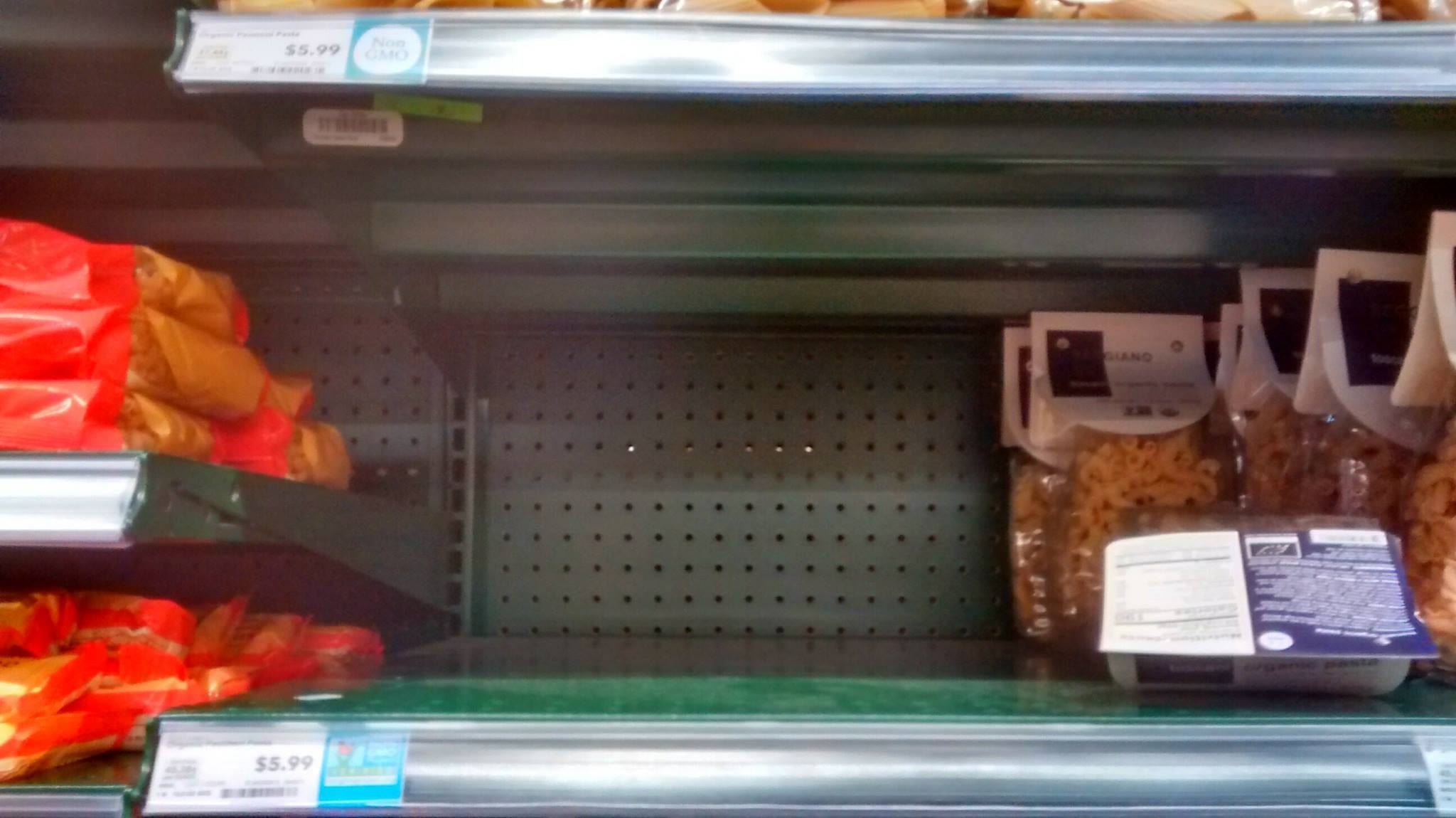Whole Foods customers have been finding half stocked shelves while small time suppliers are getting edged out of the store. What’s going on, Whole Foods?
Whole Foods shoppers in stores across the United States have been distraught lately to discover gaping holes where seductively overflowing bounty once awaited their passing consideration. Half stocked (or worse) produce bins, grocery shelves, and meat coolers greeted customers in stores from Houston to Boston. What’s up, Whole Foods? Is the fact that “Whole Paycheck” looks like a third-world market a first-world problem?
According to fearful, anonymous employees of the Amazon-owned chain, the half stocked shelves are no accident. Whole Foods recently went all-in on another management fad called “Order-to-Shelf,” or OTS. Order-to-Shelf, reports Business Insider, is a centrally planned system designed to streamline the chain’s purchasing process. Instead of maintaining a well-stocked (or, as some claim, overstocked) inventory “in the back,” employees take deliveries and move them straight to store shelves, which, it seems, are conveniently gaping and ready to hold the goods.
The move to OTS is meant to slash costs, clear out storage areas, manage inventory more easily, and reduce waste. Backstock areas, which customers probably imagine as the warehouse in the closing scene of Raiders of the Lost Ark, are now largely empty, instead of being filled to the brim with items waiting to be circulated out onto the sales floor, possibly spoiling in the meantime. Employees agree that OTS has reduced spoilage, but will it cost more than it saves if customers shop at better-stocked stores instead?
On the other hand, seriously woke shoppers could consider this an opportunity for personal growth, creativity, and acceptance of the things they cannot change. If any store should be courting conscious customers with real action against the scourge of food waste, Whole Foods is it. According to The Guardian, as of 2016, Americans threw away about as much produce as they actually ate – so the shelves may as well be half stocked. Instead of expecting Whole Foods to carry products to suit every whim, why not expand your food horizons by learning to substitute Brussels sprouts for missing cabbage or barley for missing rice, as Treehugger suggests?

The scandalously half stocked stores aren’t the only brouhaha brewing at Whole Foods. For as long as the company has existed, they’ve bragged about their commitment to locally sourced foods and small food growers and producers. Unfortunately, it looks like they’re walking back that business model by adopting a new “pay to play” policy that appears to disadvantage smaller-scale suppliers.
As Amazon weaves its free range tendrils through Whole Foods’ business practices, new rules now require suppliers not only to work exclusively with third party retail strategy firm Daymon to create store displays and conduct product tastings, but to pay for the privilege. Larger suppliers, defined as those who sell at least $300,000 worth of product to Whole Foods annually, will be required to chop their wholesale prices by 3-5% to defray the cost of hiring the mandated middleman. Suppliers will also be required to pay fees of $110-$165 for four-hour product samplings, or as some shoppers seem to think of them, free lunch buffets.
As Whole Foods, Amazon, and Daymon centralize the stocking decisions that once took place on a regional and store level, smaller producers are being edged out by larger national brands which can afford such fees and supply enough product to be featured in stores from coast to coast. It’s a shame, since the small-scale vendors that are losing market share are often the same ones who would love to be able to fill Whole Foods’ half stocked shelves with more of their own product, perhaps conveniently on short notice. That would be a win for locavore customers and small business alike, but with Whole Foods deciding they’re too cool to play that game anymore, local producers and the people who love them will have to go back to the same old-school farmer’s markets, food co-ops, and indie outlets where they connected before Whole Foods rolled into town.
Related: A Peek Behind Whole Foods’ Green Veneer


Join the conversation!